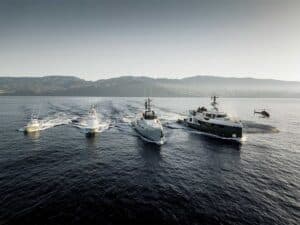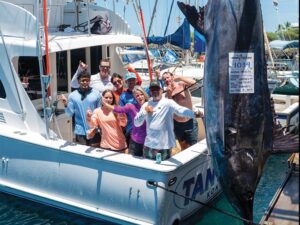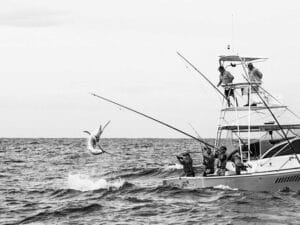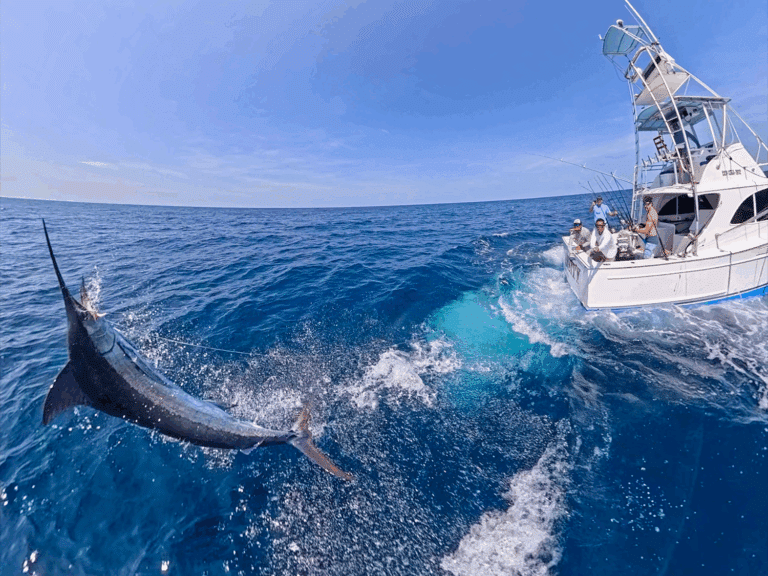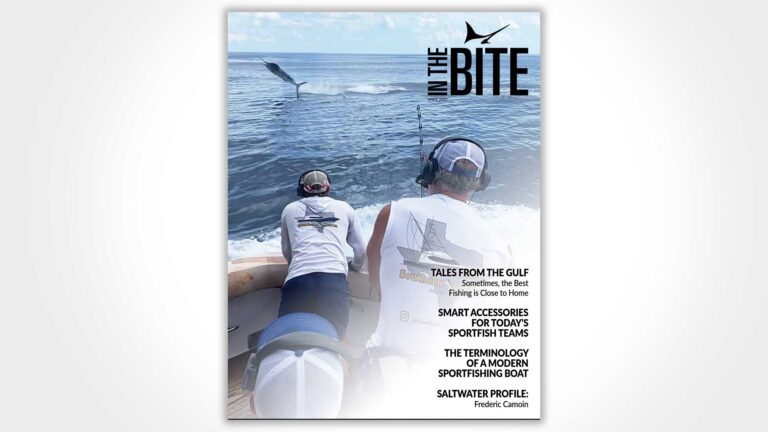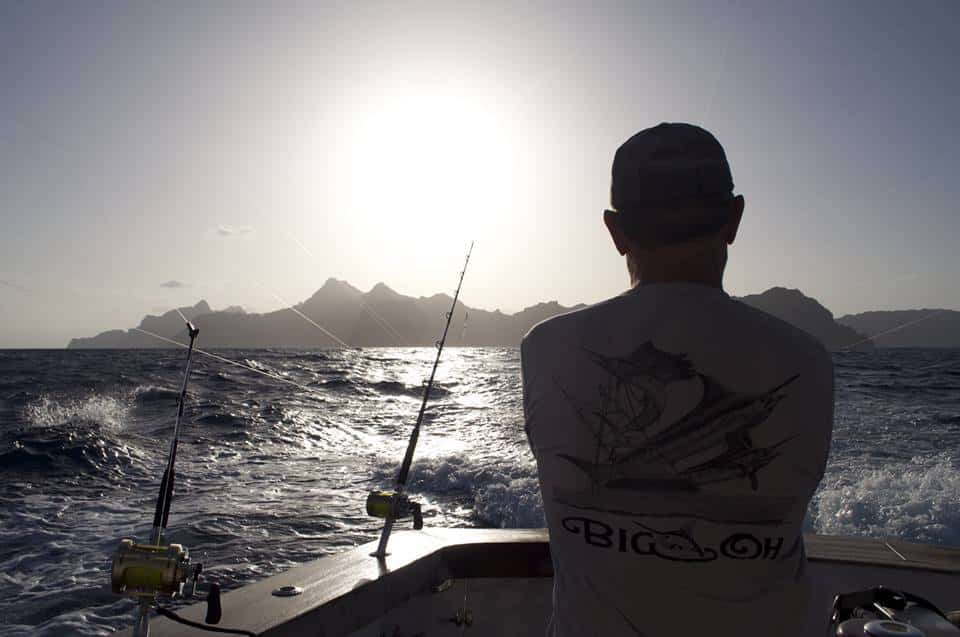
It’s a destination that seems to be on everyone’s mind these days: Cape Verde. Like most good fishing hot spots, it’s remote and not easily traveled. But the rewards can be well worth the trouble. It’s truly the land of giants: Four of the top blue marlin in recent memory weighed better than 1,200 pounds, and that’s not counting many that were released. Here’s what you need to know to travel and fish Cape Verde.
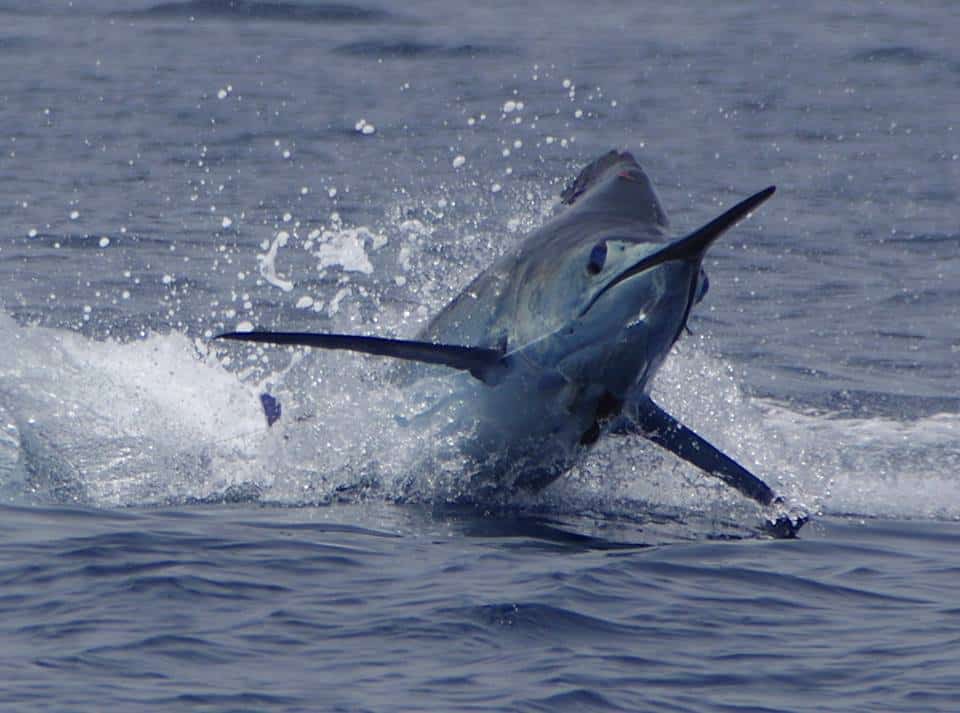
The Land of Giants
A remote string of islands situated a few hundred miles west of Senegal, Africa, and 950 miles south of the Canary Islands, Cape Verde straddles a blue marlin highway through the Atlantic Ocean. There’s lots of ground to cover, though, as the archipelago consists of 10 main islands, divided into the windward and leeward groups. Cape Verde gained its independence from Portugal in 1975 and owes a good deal of its language, cuisine and music to its Portuguese roots.
It’s a well-known fishery that’s been visited by some of the best in the world at one time or another. Jim Edmiston’s El Zorro was one of the first mothership operations; they were in Cape Verde in 1987 as part of a worldwide search for a “double-grander” marlin, one weighing more than 2,000 pounds. Capt. Skip Smith and the Dunaways followed on The Madam and The Hooker in 1988 as part of their world tour and found incredible fishing. Capt. Berno Niebuhr set up shop in Cape Verde in 1997, recording 13 blue marlin in excess of that magical thousand-pound mark during his 19 seasons there (and losing countless more).
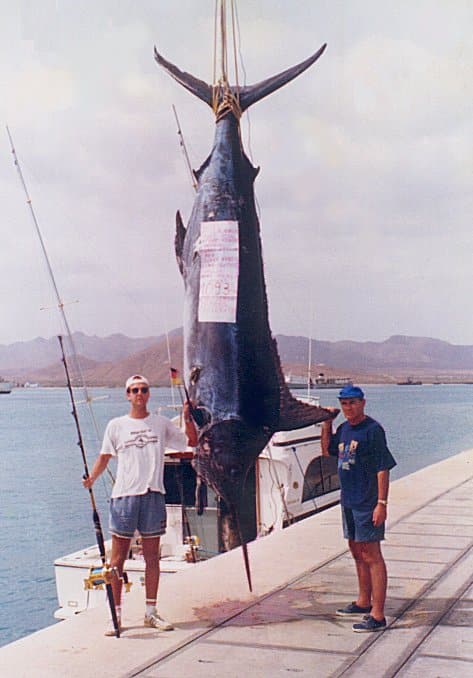
Gray Ingram and Capt. Ronnie Fields teamed up to fish Cape Verde for three incredible seasons. In 2013, they had 291 blue marlin releases, including one stretch where they caught 51 blue marlin in five days on Ingram’s Big Oh, going 14 for 16 on the fifth day, plus a white marlin and a spearfish for a grand slam. They came back the following season, fishing from April through June, and released 404 blue marlin, including 37 fish over 500 pounds and four over 800 pounds. They broke Capt. Ezequiel “Zak” Conde’s previous record from 2012, when he released 329 blues in a single season. In 2015, the Big Oh team landed Ingram’s dream fish, a 1,254-pound beast of a blue marlin. And in 2016, Dreamin’ On caught the really big one, an incredible 1,290-pound blue marlin that stands as the island’s record. Be ready: The big ones live here.
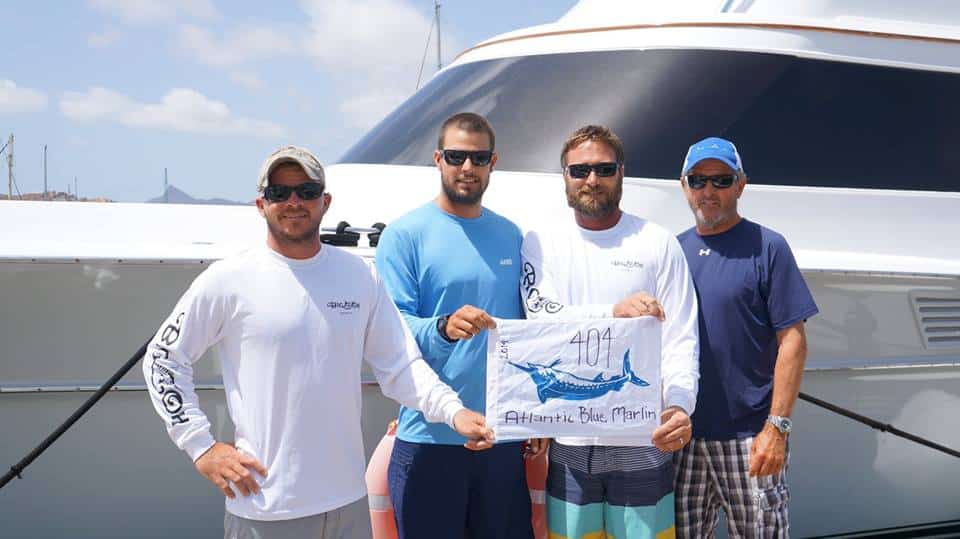
When to Go
Capt. Berno Niebuhr came to Cape Verde chasing blue marlin 19 years ago, and found that his previous 15 years of bluewater experience paled in comparison. “This place was just amazing, and so much better than anywhere else in the world I had fished for blue marlin,” he reports. “We catch white marlin, spearfish, swordfish and sailfish. We also have good numbers of big wahoo, yellowfin and bigeye tuna, mahimahi, and several species of sharks, with big tigers leading the way there.” He currently runs Happy Hooker, a 35-foot Bertram.
Niebuhr cautions that when you set the peak seasons on the calendar, be sure to tell the fish. “Most everyone here is only fishing for blue marlin during what they call the ‘peak season,’ from mid-March until the end of June, but I don’t agree with that,” he says. “It’s true that you can find excellent fishing with good numbers of bites during that time, but you can find fair to excellent fishing after June too, sometimes even better on numbers and sizes.” Niebuhr says he’s caught blues every month of the year, from January to December. “The best month I have seen in terms of numbers of bites was in September, with 24 bites in a day. All other months can easily produce five to 10 bites or even more,” he says. “And while it can be quite slow if you don’t find the fish, you also hear of good numbers of blues around the other islands. It means that the marlin are in the Cape Verde archipelago all year long but just travel between the islands.” He says that while most of his big marlin have come in the month of September, he’s won the July 4 Blue Marlin World Cup twice, in 2006 and 2010.
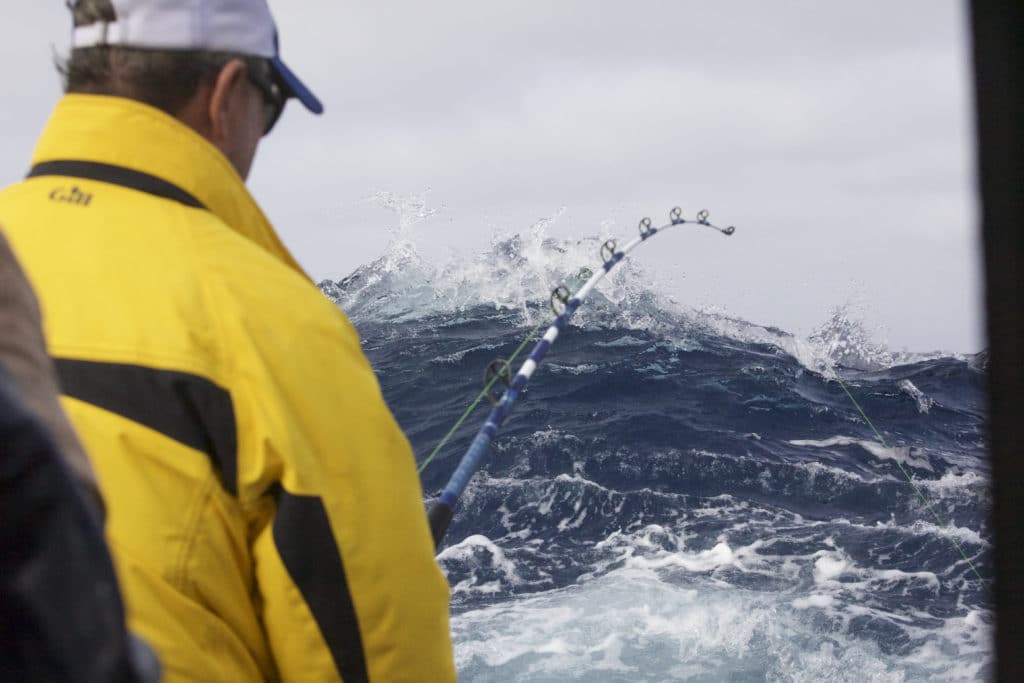
Capt. Olaf Grimkowski is another Cape Verde veteran who feels the fishing can be good there nearly anytime during the year. “We are fishing mainly from March until July, but that doesn’t mean the rest of the year is not just as good,” he says. “There have been marlin caught in every single month of the year. We have had seasons where the only boat that fished in February and March had caught more than 100 blues before the rest of the fleet even started to fish.” Grimkowski says August and September have offered hot fishing in the last few seasons, with only a few boats fishing and lots of action. “You can catch big fish here anytime, but there seems to be a better chance for the really big ones from July to September. Last year there were three or four weighed in this period,” he recalls.
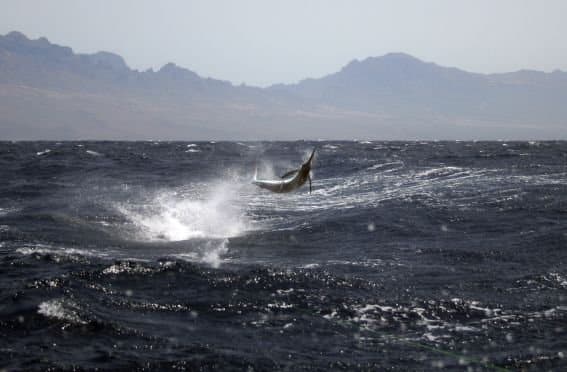
Getting There, Fishing There
Due to the location of the Cape Verde Islands, they’re understandably difficult to reach. Ken and Amanda Cofer recently made the trip over from the United States, looking for a shot at beating the ladies’ 50-pound-test world record, an 802-pound blue caught by Ann Holmes in 1986 off the Canary Islands. “We flew from Miami to Lisbon [Portugal], which was about an eight-hour flight, then had a seven-hour layover in Lisbon,” Amanda Cofer relates. “After that, it was about four hours from Lisbon to Sao Vicente, in Cape Verde. It honestly looks like you’re landing on Mars. No greenery, trees or plants, just a reddish terrain and mountains that meet the ocean.”
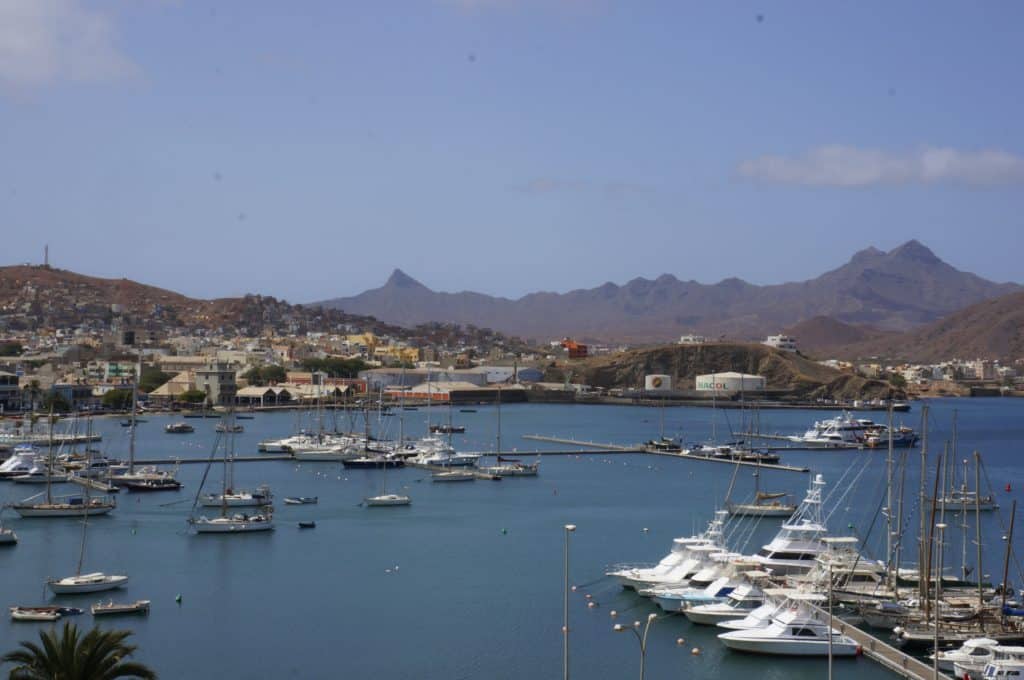
When it’s time to put the lines in the water, there are plenty of deep banks and drop-offs that hold marlin. And the size of the fish is unpredictable: The first bite might be a 250-pounder, and the second over 1,000 pounds or more. For this reason, most captains prefer to fish lures on heavy tackle and pitch-bait with the appropriate gear to any blues that crash the teasers. Of the recent big blues caught there, the Dreamin’ On fish was landed on a lure, while the Big Oh‘s grander was on a pitch-baited dead bonito. Take your pick, but be prepared for a big girl.
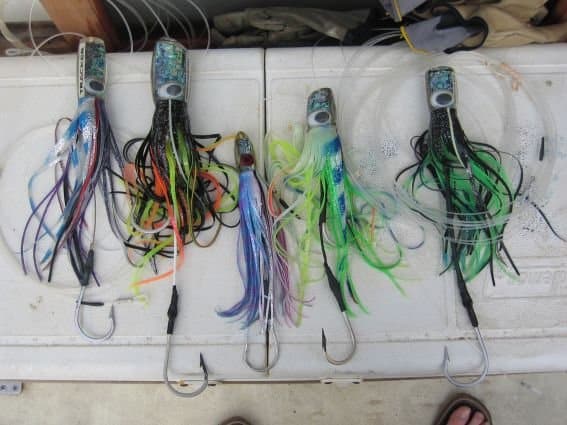
Capt. Zak Conde is another skipper who’s right in the mix when it comes to Cape Verde’s big blue marlin. He was named top tagging or top release captain for blue marlin in the Atlantic Ocean by The Billfish Foundation in 2007, 2009, 2011 and 2012. That’s due in part to his experience in chasing some of the biggest marlin in the world. Born in the Azores, he’s fished Ghana, the Canary Islands, Madeira and Ascension, as well as Australia’s Great Barrier Reef for black marlin. He currently runs Anna Alexis out of Mindelo Harbor, on Sao Vicente. Conde switches things up from time to time when building his spread and pulls a pair of lures or rigged flying fish on the long riggers and teasers on the flat lines, or just all teasers with one lure as a stinger way back down the center. He’s running all Andy Moyes customs for lures and teasers and has passed 160 blue marlin releases so far this year, with another month to go in the season.
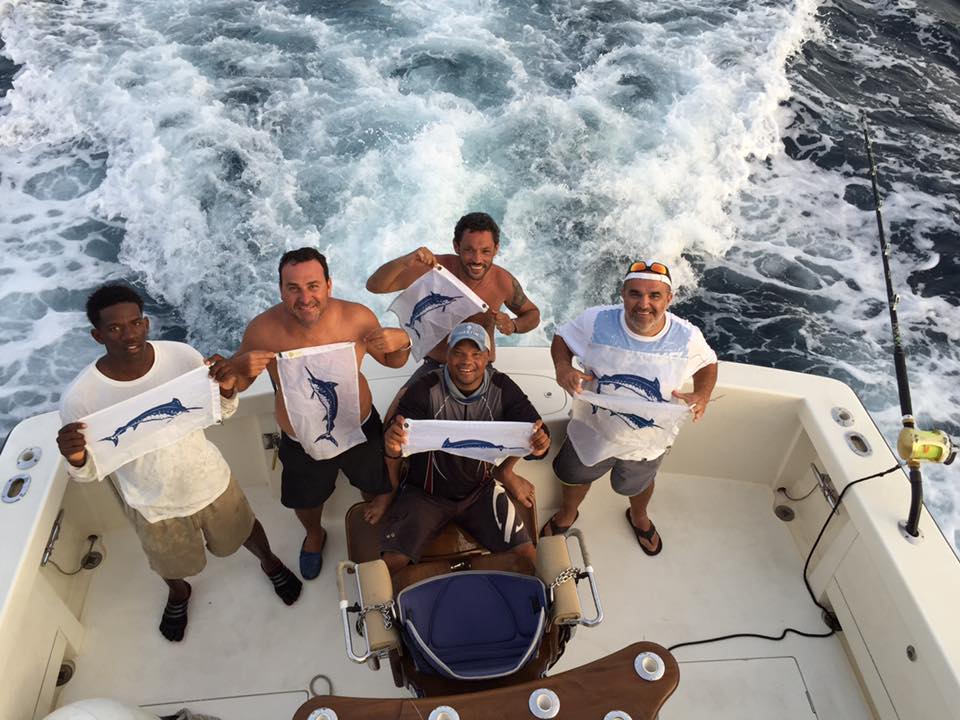
“We pitch-bait every day here,” Conde says. “It’s more interactive, with a much higher hookup rate compared to lures.” As an angler, you just need to manage the adrenaline rush of a big blue marlin chomping a teaser just a few feet from the transom — it’s highly addictive. In late June, Conde’s charter party went six for six on blues, with one more raised on the bridge teaser and three more fish seen in the spread during the day. He says the sizes ranged from 175 to over 500 pounds. The aggressive blues chewed his favorite teaser, a Moyes Sumo, down to a nub in the process.
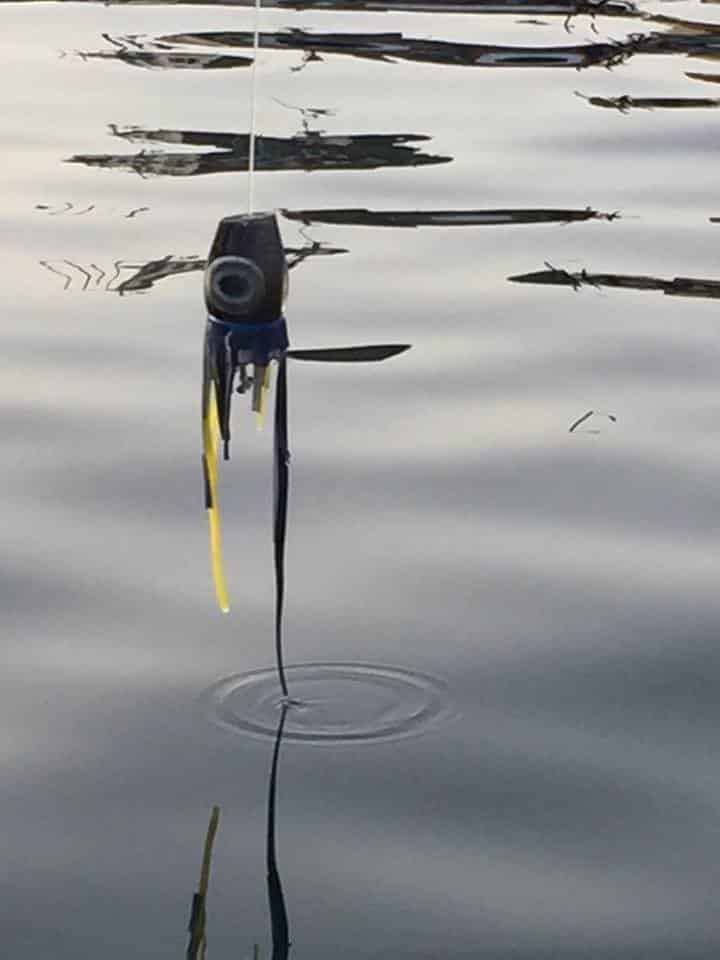
Grimkowski, fishing on the 46-foot Bertram La Onda Andromeda, builds his spread starting with a pair of teasers in close, where his anglers pitch with 30- to 80-pound tackle, depending on the size of the fish. Marty Bates also uses a mix of lures and bait. “It really depends on the angler’s experience and ability,” Bates says. “We fish with bridge teasers short and lures on the longs, mostly Moyes and Aloha, and the dredge is standard. But when the bite turns on, we rig flying fish with a chugger and a circle hook instead of lures on the long riggers to get a better hookup rate.” He says that 50-pound stand-up gear is the norm, but they are ready with anything from 30- to 130-pound tackle.
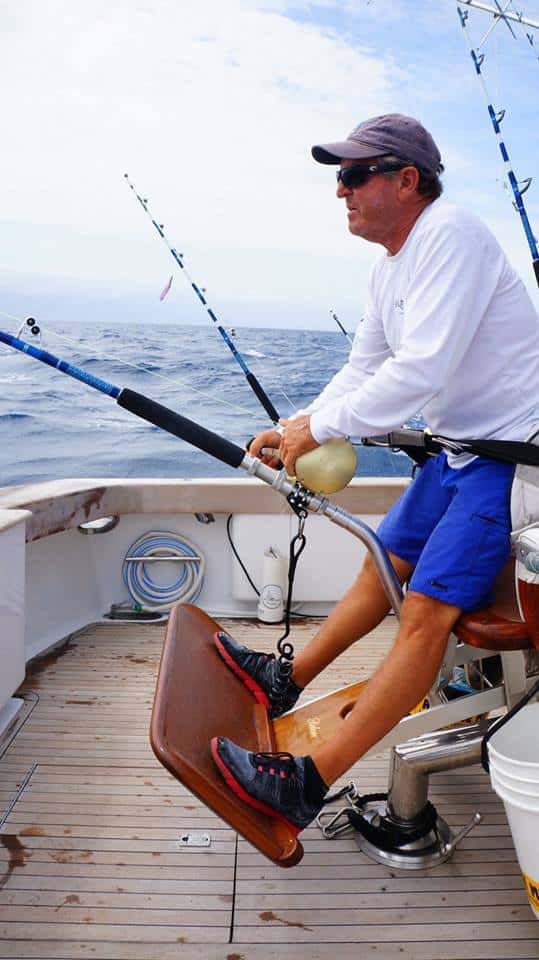
Chasing Records
The Cofers chose to cover all the bases during their record-chasing trip, fishing with Capt. Brad Philipps on Hooker. “We pulled all teasers and one dredge, and had one dead bait with a hook on the right long in the water at all times,” Amanda Cofer says. “Since we were going for the ladies’ 50-pound record, we needed to catch one bigger than 803 pounds, and so we were fishing by IGFA regulations.” She says that when they raised a big marlin, she would pitch the rod spooled with IGFA-rated 50-pound line. And while the team didn’t get a chance to bait any real giants, they did score four blue marlin releases. “Two were average-size, at least for Costa Rica, about 250 pounds,” she says. “One was around 750 pounds, and another was 650.”
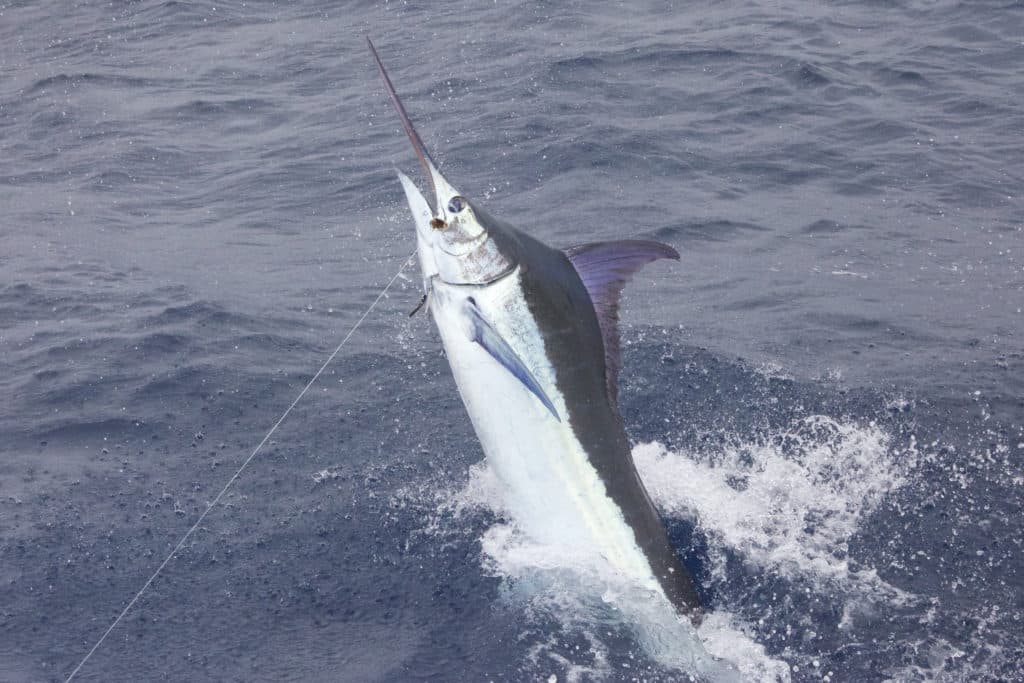
Anglers should always be ready for a monster blue in Cape Verde, though. Marty Bates’ largest marlin was a beast they called 900-plus pounds on the leader, where she spat up a 40-pound wahoo before being released to fight again. Aside from the 15 or so weighed granders, scores more have been released that would be close to or over the mark. And every captain fishing there has seen marlin that were even larger.
The good news is that because of the size and numbers of big fish, the charter operations fishing in Cape Verde are well versed in the game of chasing and catching blue marlin. The weather is surprisingly temperate, but it’s almost always windy, so be prepared with the appropriate clothing; it’s probably not going to be slick calm, although you might find yourself fishing in the lee of one of the many islands in reasonably comfortable conditions. While Cape Verde is not quite a luxury destination, there are some nice hotels and plenty of good restaurants to explore while on land. So if you’re seeking adventure and possibly the blue marlin of a lifetime, pack your bags and head for Cape Verde.
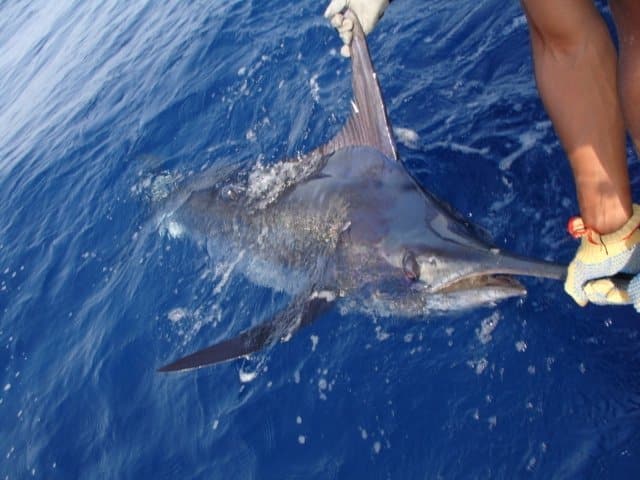
Contacts
Capt. Marty Bates, La Onda Pesca Deportiva fishing-capeverde.com
Capt. Zak Conde, Zaksfishing Cabo Verde marlincapeverde.com
Capt. Olaf Grimkowski, La Onda Pesca Deportiva fishing-capeverde.com
Capt. Berno Niebuhr, Billfish Club Cabo Verde capeverde-fishing.com
